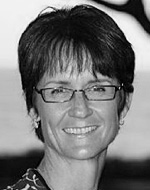Moving Beyond Labels
To get the most out of employees and colleagues, leaders have to train themselves to go deeper than snap judgments and get to know people for who they are.
We label people all the time. It’s natural and instinctive. Levi is creative and disorganized. John is disciplined but lacks people skills. Leah’s anxiety impacts her results.
Labels are useful. But they are often wrong. In her book, No One Understands You and What to Do About It (Harvard Business Review Press, 2015), Heidi Grant Halvorson explains why, and offers some crucial insight into how leaders can move away from instant labeling and instead come to see people for who they are — and for who they can be.
Simply put, we are cognitive misers. In the quest to preserve energy, our brains jump to judgments that are “biased, incomplete, and inflexible” and “largely (but not entirely) automatic,” Grant Halvorson writes. The majority of our perceptions are formed unconsciously based on very little data. We are prone to think and feel only as much as we need to, and no more. Halvorson points out that we assume “things that come to mind easily happen more frequently.” And that causes us to put far too much weight on early impressions, and fall victim to confirmation bias — i.e., seeking information that supports our point of view. With low-stake decisions, the ability to act without conscious thought is a godsend. (Coke or Pepsi? I’ll have a Coke.) But people decisions are always high-stakes decisions, which means we have to train ourselves to reach conclusions a little more deliberately in order to get beyond labels.
The majority of our perceptions are formed unconsciously based on very little data.
According to Grant Halvorson, seeing people for who they are requires seeking and using relevant information correctly. Perception occurs in two phases. Phase One occurs “automatically…in fractions of a second,” and is “riddled with biases that shape the conclusion.” Phase Two involves consciously taking in more information, and results in discounting and correcting the Phase One conclusions. Phase One occurs without thinking and cannot be turned off, whereas Phase Two “engages when necessary, and only when necessary,” requiring complex and effortful mental operations.
The catch: Complete and accurate understanding of another human being takes motivation and work, which starts with some uncomfortable introspection. Regardless of your feelings to the contrary, it’s critical to embrace the notion that your current perceptions of other people are flawed.
There is no easy path to interpersonal enlightenment. So how can you get there? Let go of the tendency to try to get insides the minds of others by filtering words and deeds through your personal values, motivators, and experience, or judging others based on their actions in the absence of understanding the wider context. Most people behave rationally given context and “most of what we do, most of the time, is what anyone would do under the same circumstances,” Grant Halvorson writes. It’s fruitless to rely on others to tell us what we need to know because everyone overestimates how easily they can be understood. We also can’t assume that time resolves the disconnect. After all, Grant Halvorson notes, “people who know you — particularly those who know you well — will tend to see you the way they have always seen you.” And we can’t trust our initial impressions. Without conscious thought, stereotypes will activate in our minds and exert influence, even if we “believe them to be utterly wrong.”
Here are some next steps I recommend based on my coaching experience. Discipline yourself to capture and document your judgments and hold them loosely, as hypotheses. Adopt a mind-set of curiosity as it relates to others. If you trust first, and convey warmth and competency, you will gain the trust of others and increase the likelihood of getting good information. If you are carrying around strong opinions (positive or negative), step up the intensity of interaction and observations (e.g., through 360-degree feedback, or by partnering on a project) and seek information that challenges your point of view over a sustained period of time.
Delegate well and set others up for success. Be careful not to ignore people lower on the power grid, engage in blame-shifting, or let pride get in the way when dealing with challenging and gifted people. Instead, leaders should “bask in [others’] reflected glory,” as Grant Halvorson puts it, by actively sponsoring their efforts, sharing credit, and affirming accomplishments.
Finally, I advocate that to see people for who they can be — i.e., their potential — you should overlay a strong understanding of strengths and weaknesses with insights regarding motivators, values, and career goals. Honor others’ goals and align development plans to help build requisite skills, and test their ability and motivation to grow. Sure, people’s dreams may be impractical. But you should pay heed to them nonetheless as the process of reaching, learning, acting, and reflecting will strengthen mutual understanding and the relationship. It’s impossible to know what someone can do unless he or she is given the opportunity and encouragement to move toward goals.
Nuanced insights free people up, with the support of others, to be who they are and discover who they can be. Over time, with effort, my clients better understand Levi, John, and Leah. They now realize that Levi isn’t disorganized, but swamped, that John is receiving counseling for interpersonal issues stemming from parental neglect, and that Leah’s anxiety has lessened as her experience and confidence has grown.
No one is perfect. As you reflect on whether your people can rise to the challenges of the future, consider the options that Grant Halvorson lays out. Rather than recruiting new strangers to join your organization, doesn’t it make sense to get to know the strangers already in your employ?



